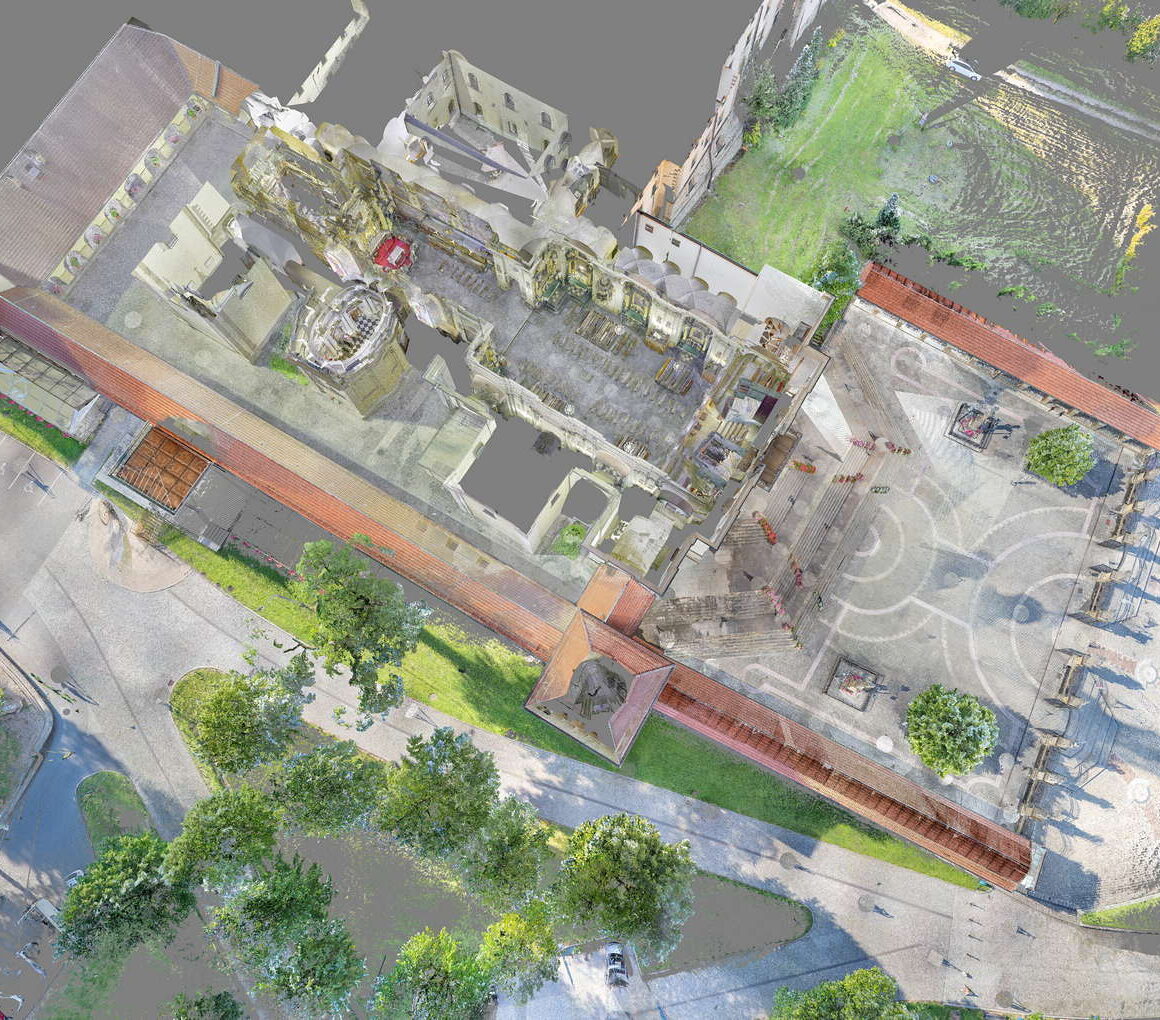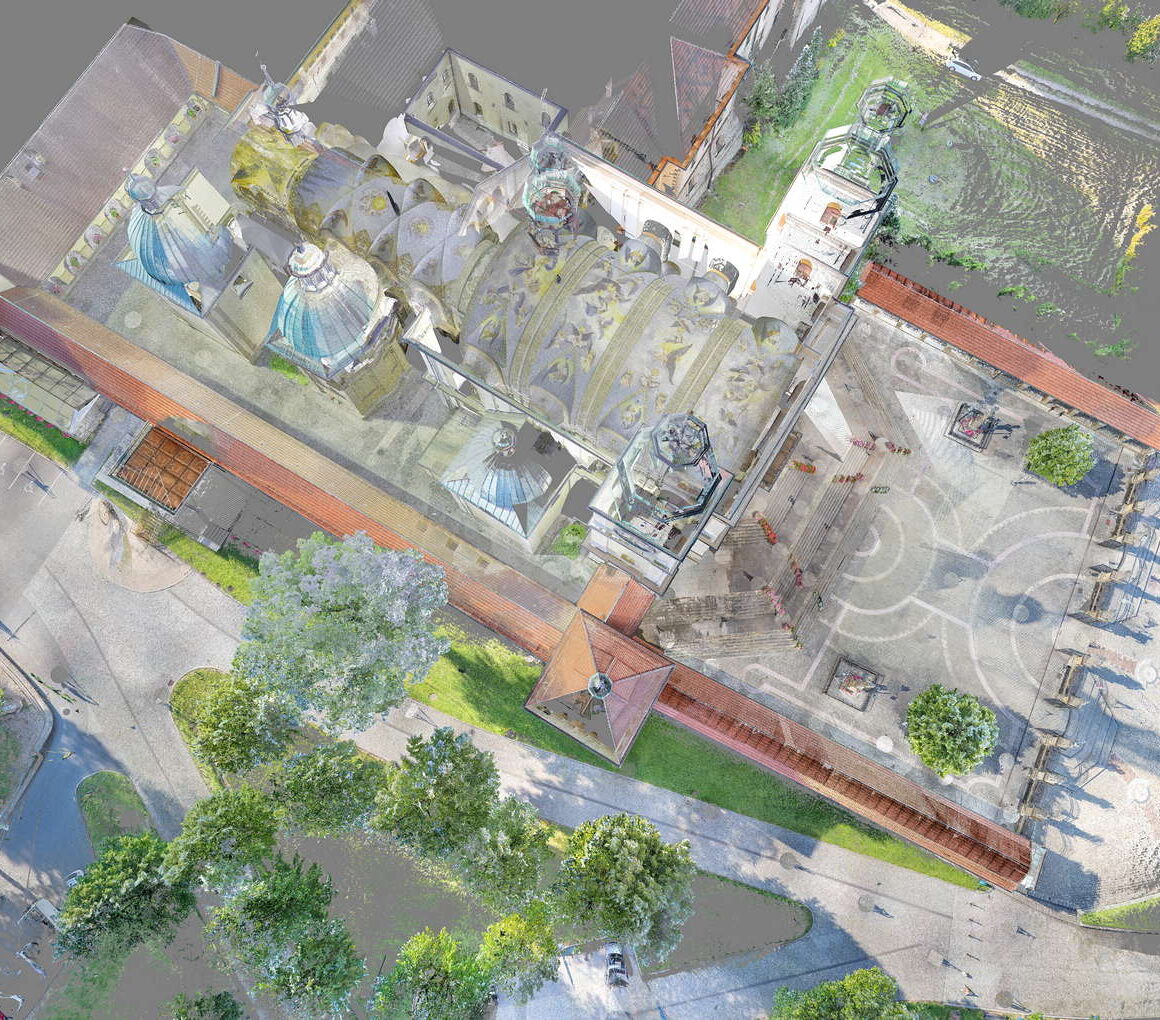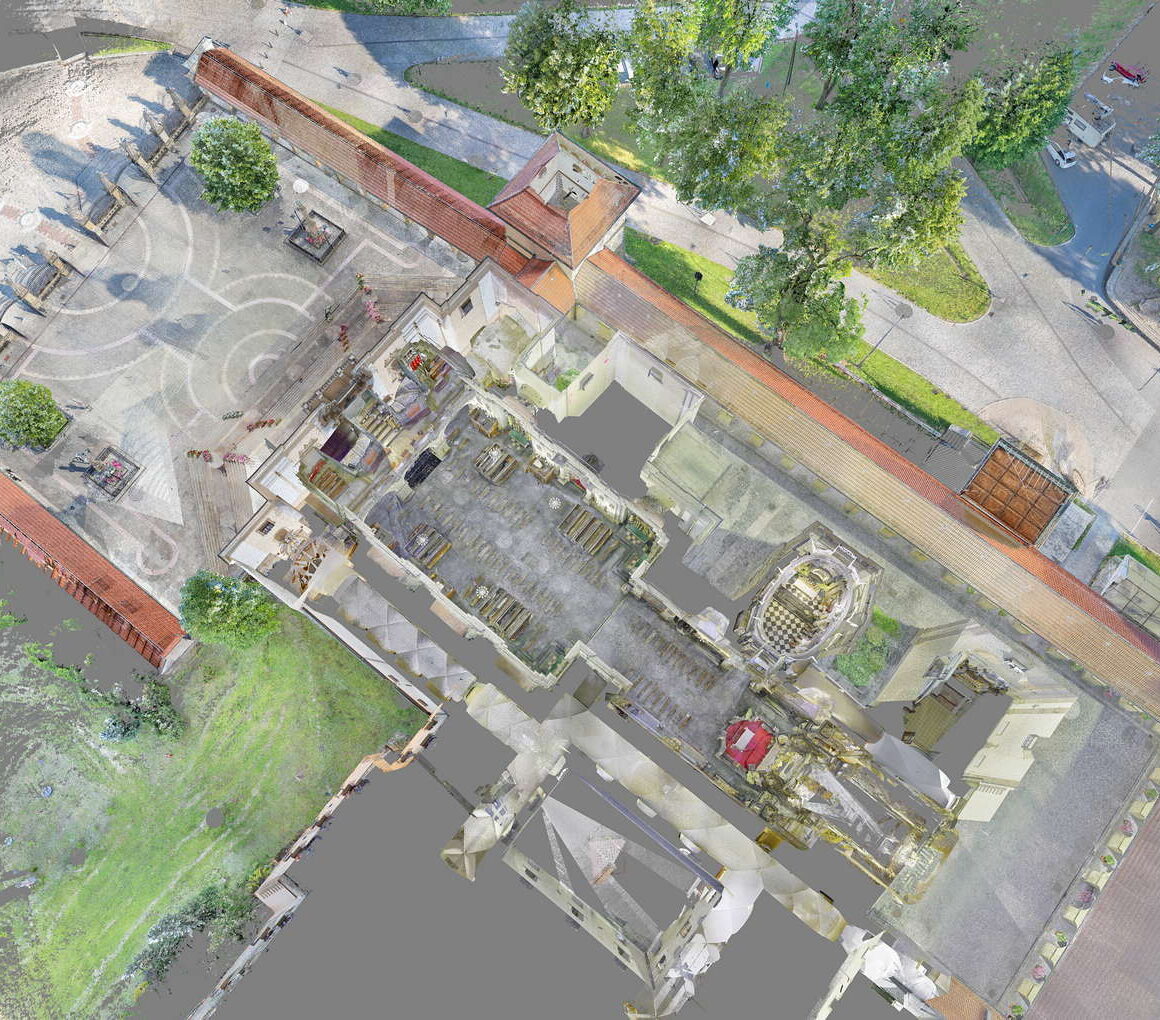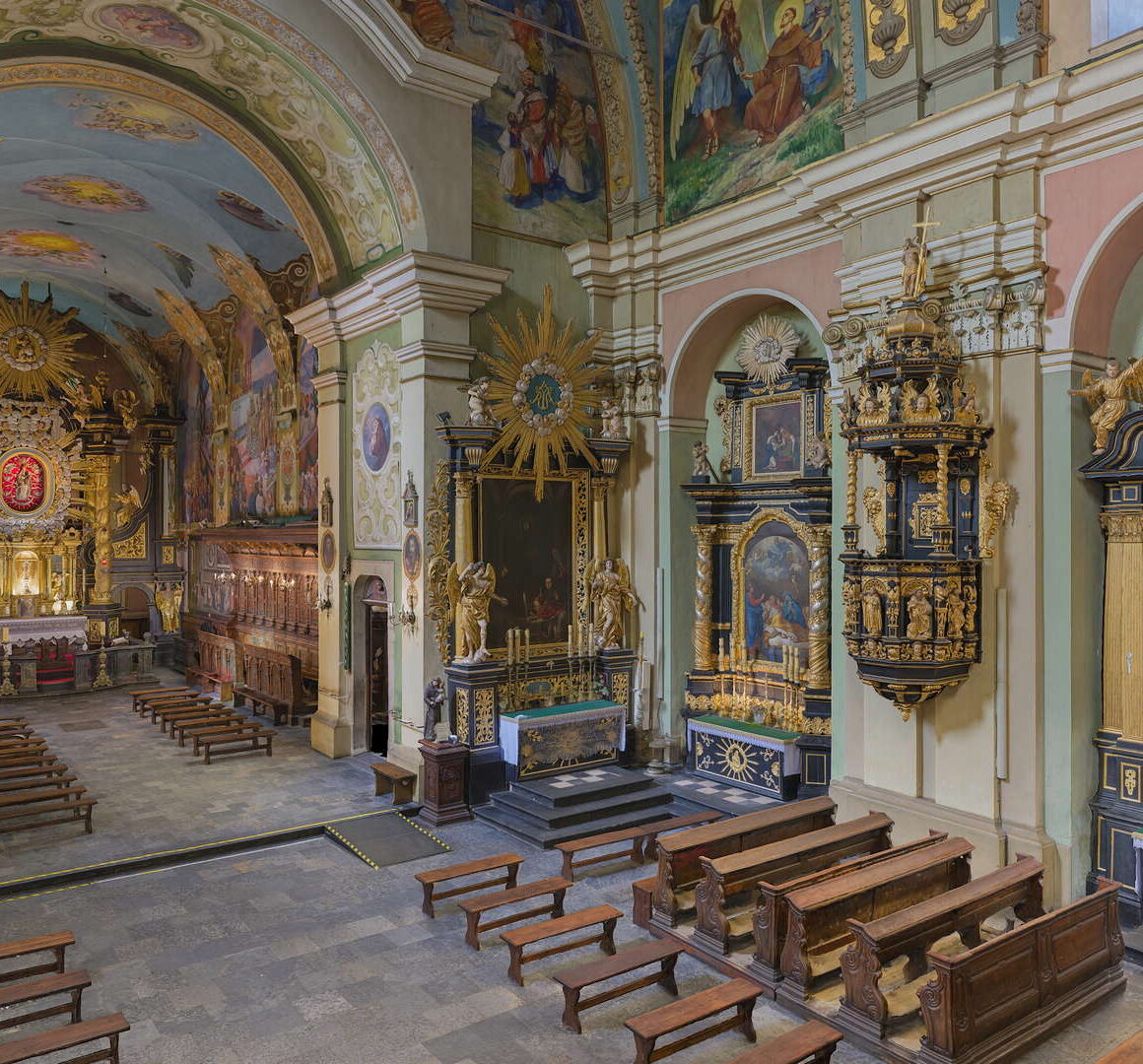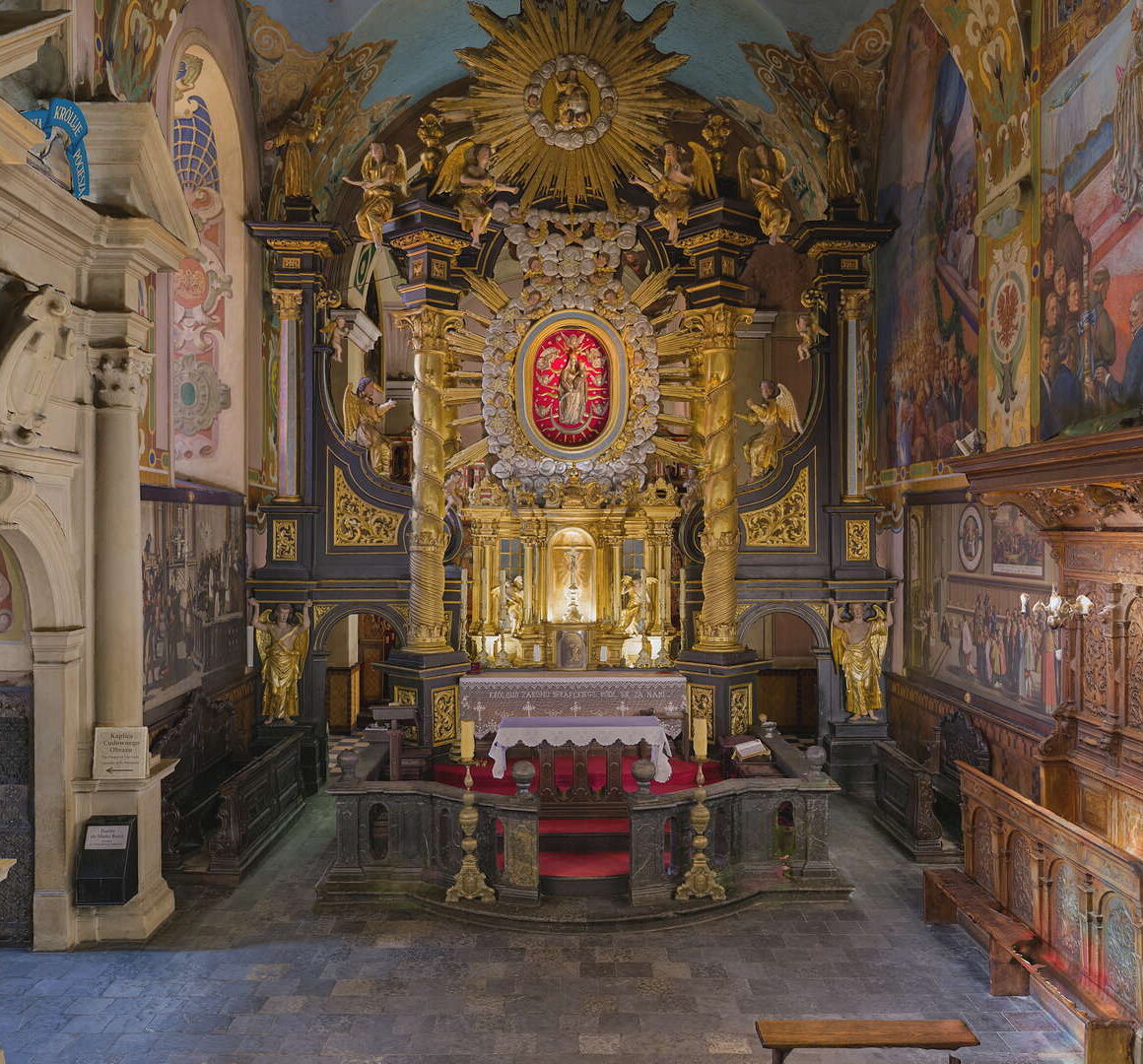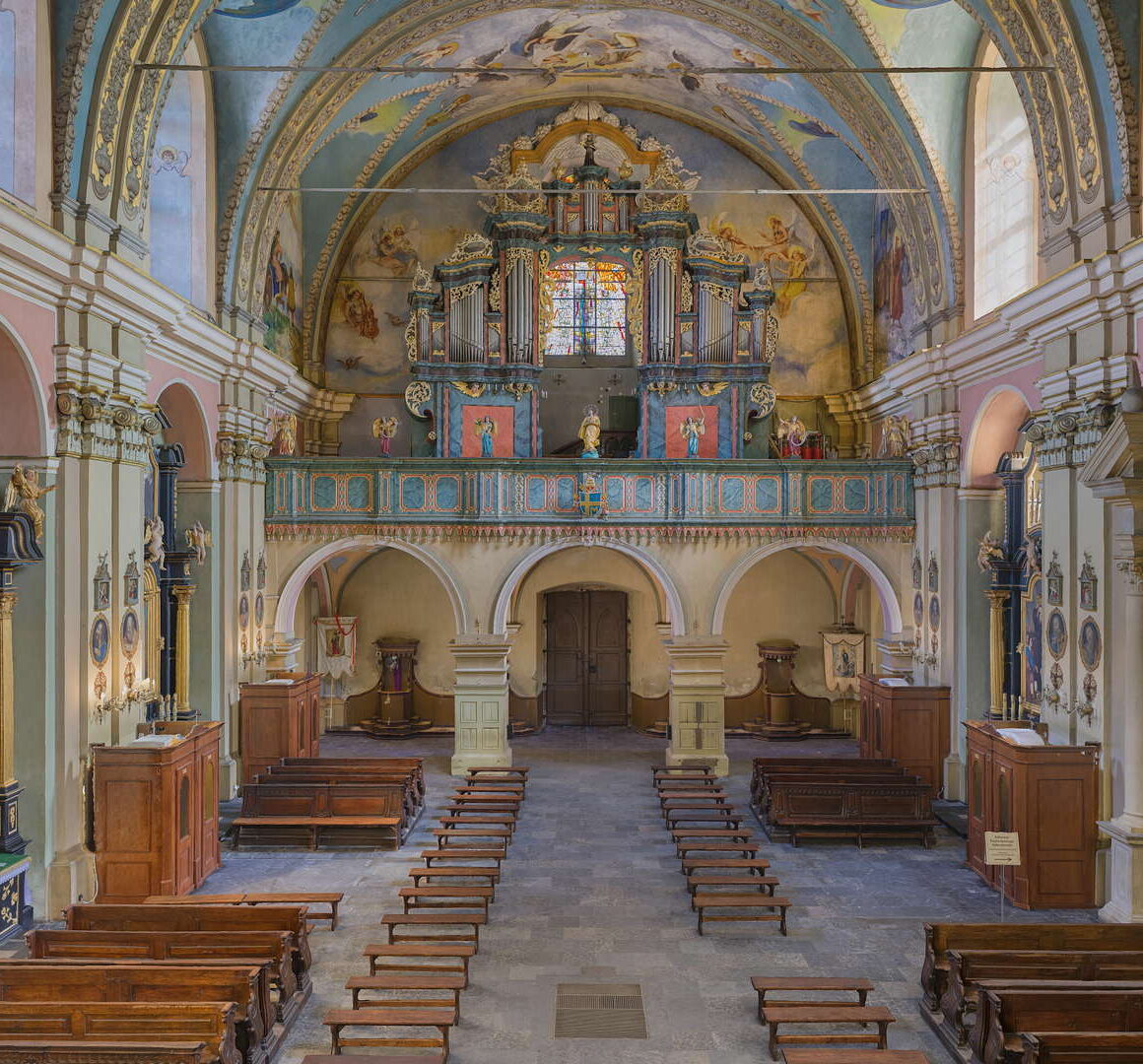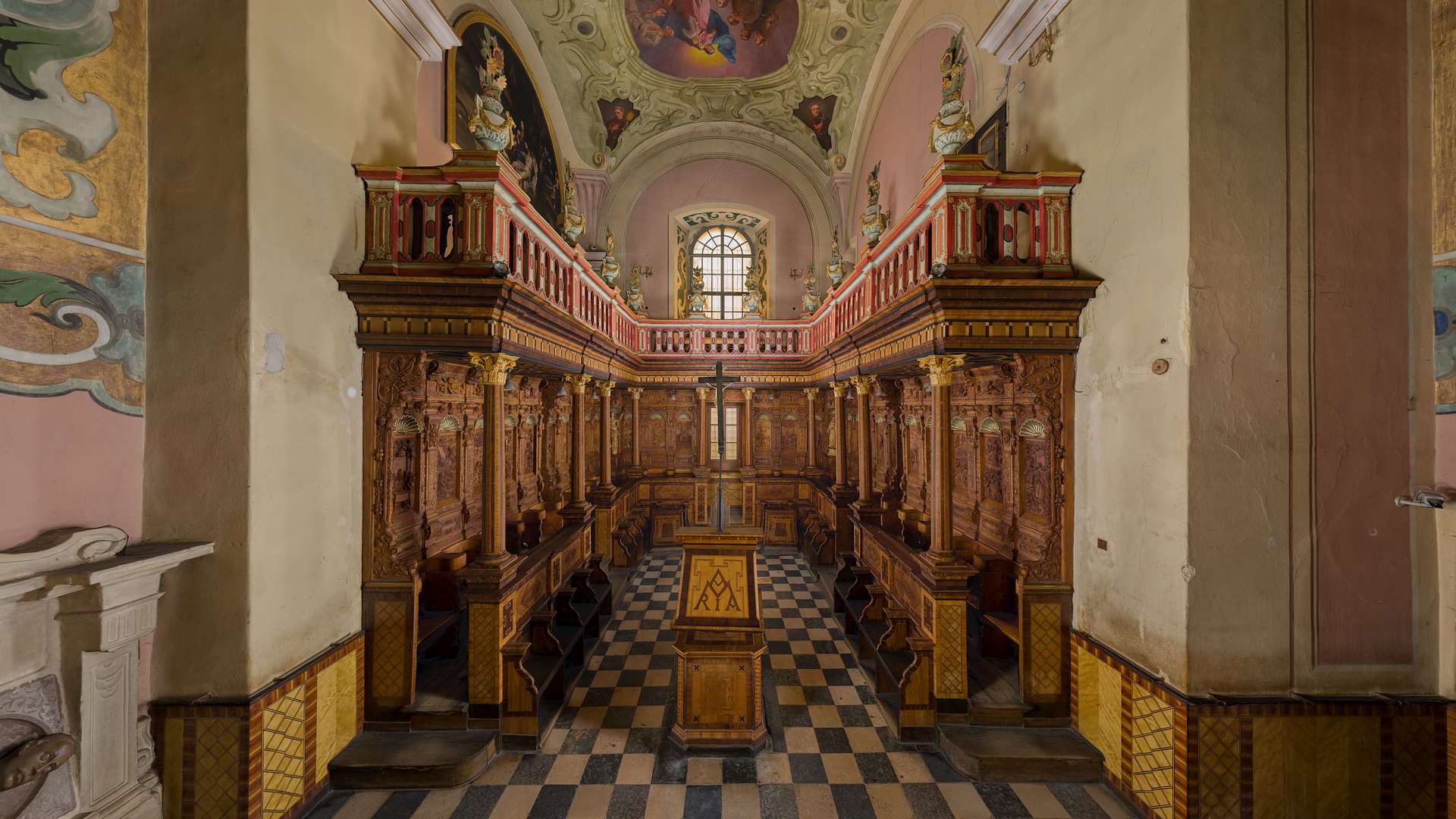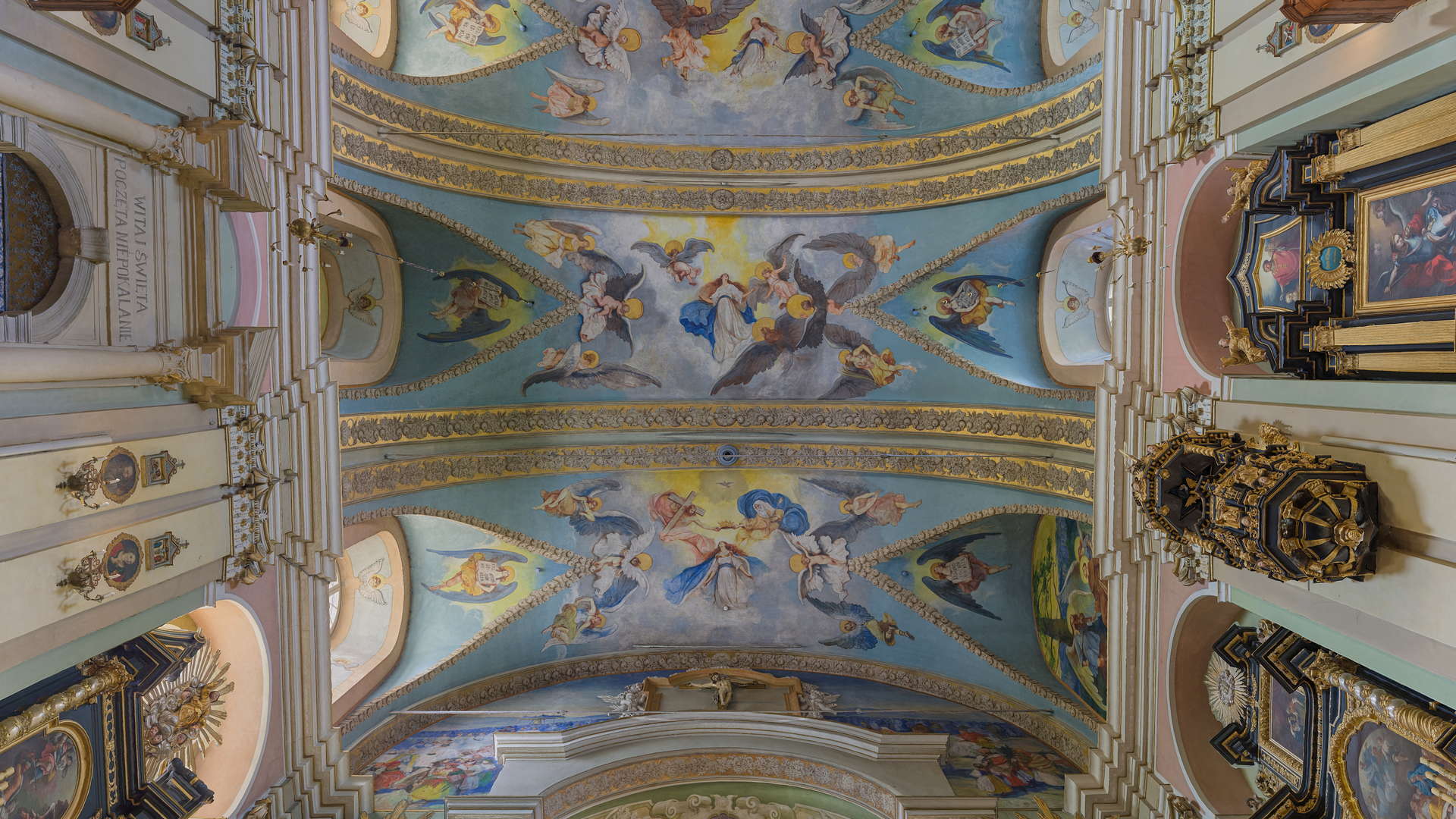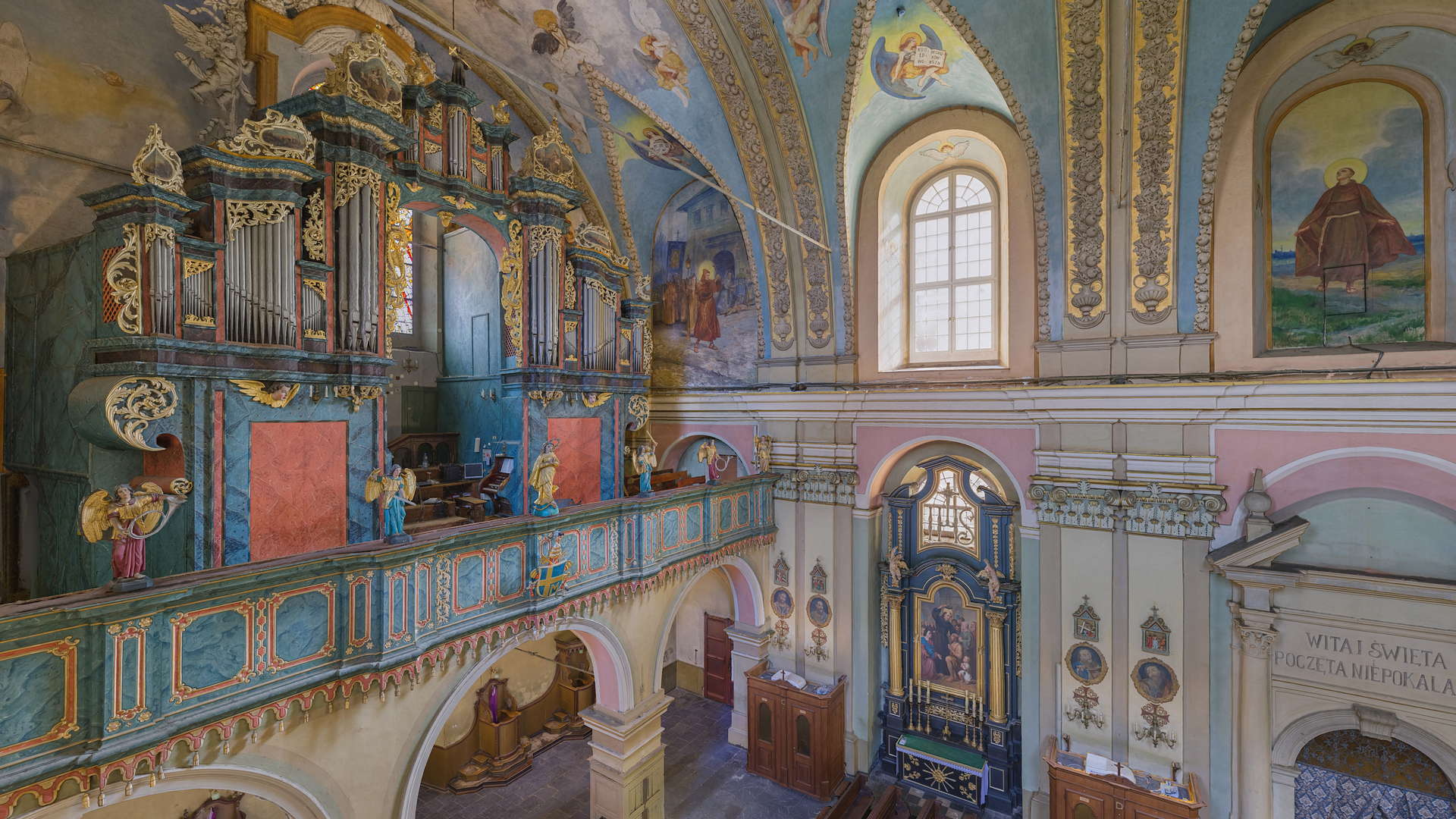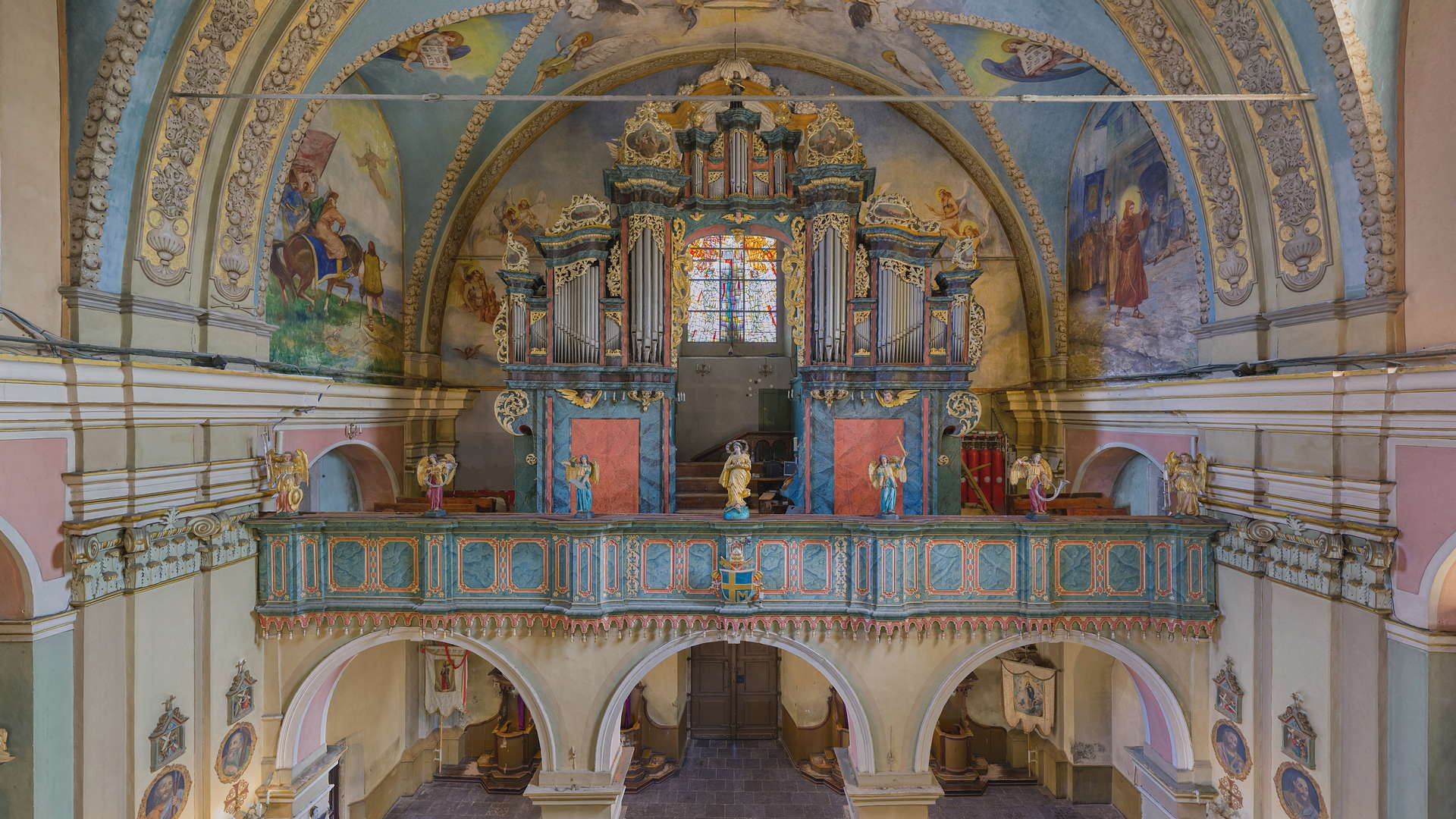Kalwaria Zebrzydowska – Basilica and Rajski Square
For more than 400 years, Kalwaria Zebrzydowska has been attracting crowds of people who want to get to know this unique and charming sanctuary. Today, both pilgrims and tourists are tempted by the prospect of visiting this unusual place, as well as the opportunity to commune with centuries-old history and unspoiled nature while walking along the famous Kalwaria paths.
The value of this unique site was appreciated by the UNESCO World Heritage Committee which inscribed the historic architectural and landscape complex of Kalwaria Zebrzydowska on the List of World Cultural and Natural Heritage on 1 December 1999. The fact was commemorated with a plaque being attached to the fence of Rajski Square. The ceremony of presenting the inscription certificate of the basilica, monastery and paths on the World Heritage List took place on 9 May 2000, when UNESCO delegate Herman von Hoof handed over the document to Fr Władysław Waśko, the prior in Kalwaria.
History of the Sanctuary – the role of the founder Mikołaj Zebrzydowski
The history of this place goes back to the beginning of the 17th century and is related to the activities of one of the magnates, Mikołaj Zebrzydowski, the then voivode of Kraków. According to some legends, the beginnings of Kalwaria should be traced back to the Holy Week of 1595 when Mikołaj and his wife, Dorota, saw three crosses from the windows of their residence in the castle in Lanckorona, which shone on the nearby Żarek Hill. It is believed that this supernatural event inspired them to found the future Kalwaria.
The idea of erecting a Calvary, which emerged in the Polish-Lithuanian Commonwealth in the 17th century, meant that, apart from the described Kalwaria Zebrzydowska, a number of similar concepts were developed, e.g. in Pakość, Greater Poland (1628), Kalwaria Żmudzka (1642), Wejherowo (1649), Góra Kalwaria (1657), Vilnius in 1662, and Pacław near Przemyśl (1665).
The initial pages from the past of the future sanctuary
It was on the initiative of Zebrzydowski that the Chapel of the Crucifixion was erected in 1600-1601, which then became the nucleus of the future extensive architectural concept. The Chapel of the Crucifixion was modelled on the Jerusalem chapel – one of Zebrzydowski’s courtiers brought a plaster model (of both the chapel and the Holy Sepulchre) from a pilgrimage to Jerusalem in 1597.
And so the construction began. The cornerstone was laid on 4 October 1600, and the consecration took place the following year. It was carried out by a papal nuncio, Klaudiusz Rangoni, and the Bishop of Kraków, Bernard Maciejowski. Initially, according to Zebrzydowski’s plans, the chapel was to serve as a place for family prayer, but over time that idea turned into a desire to create a Calvary and bring there the Bernardine Order from Kraków. The idea was already evident in 1602 when Zebrzydowski suggested the establishment of a monastery to the Kraków Bernardines, and the term ‘Calvary’ was also used at that time.
Mikołaj Zebrzydowski wanted to bring the Bernardine monks to Żarek Hill and, for that purpose, he made an offer to the provincial authorities to build a monastery for 12 monks as a branch of the Kraków monastery. According to the magnate’s original plan, it was supposed to be a place for elderly and sick friars. Due to the unique climate of the surrounding area, the future sanctuary was also to be a resting place for lecturers and seminarians of the school located in the Kraków friary. In addition, the new monastery was meant as a shelter for the monks from the Kraków friary, when the city would be haunted by plagues which were a common occurrence in those times. It was also a place where teachers of the monastic school would be able to spend the winter holidays together with the students. The construction of the monastery began with the laying of the foundation stone on 2 August 1603, with the architectural plans drawn up by the Italian master and Jesuit architect, Giovanni Maria Bernardoni. The implementation of the plans was entrusted to Paulus Baudaert, who also developed plans for chapels situated along the paths of Kalwaria.
Description of the Sanctuary
The entrance to the impressive Basilica of Our Lady of the Angels is preceded by two large squares. The first one, Pilgrimage Square (also known as Fair Square), in a way separates the two spheres; the sacred and the profane, thus creating a kind of symbolic border, which is a fence with figures of saints. This is where, for almost 400 years, crowds of visitors and pilgrims have set off on the tour around the sanctuary. The space is marked by a fence leading to Rajski Square and two-storey buildings situated on the right side (when facing the basilica), with balconies on the first floor. They were built in the 18th century, when the sanctuary was under the care of the powerful Czartoryski family and, more specifically, they should be linked to the figure of Józef Czartoryski. It was already in the 2nd half of the 17th century that the Zebrzydowski family, in the absence of male lineal descendants, stopped playing its role in history, and Kalwaria was given to the Czartoryski family, as the daughter of Michał Zebrzydowski, Anna, married Jan Karol Czartoryski.
Let us, however, go back to the history of Kalwaria in the 18th century: the aforementioned Józef Czartoryski, who was not as involved as his mother in taking care of the sanctuary, tried to clear up certain problems the monks had been facing for years. Seemingly minor and prosaic matters such as: grazing cattle on the premises belonging to the monastery (more specifically, on the paths), cutting trees, and rent arrears etc. caused disturbances in the peaceful relations between the monks and townspeople. Interestingly, the fathers were given a certain guarantee of care from the family, because Czartoryski erected a palace in the immediate vicinity of the monastery. And the watchful eye of the heir of the founders was useful in solving everyday problems.
Rajski Square
Once you go through the gate in the fence, you enter Rajski Square. This space was arranged during the thorough reconstruction and renovation of the friary, when Fr Gaudenty Thynell was the guardian. The fence itself is noteworthy, sine its stone pillars have figures (funded by the Wielopolski family ruling Sucha Beskidzka at the time) of the following saints: John of Dukla, Bernardino of Siena, Louis, Clare, Mother of God, Jesus, St Francis of Assisi, Bonaventure, Anthony of Padua, and Blessed Szymon of Lipnica. Most of them were made by Tomasz Gałuszczyński in 1823 (some studies mention 1822).
The statues showing the figures of St Anthony and St Francis, standing on both sides of the square, are not as old, and associated with the 300th anniversary of the monastery’s foundation: Francis is on the right (when looking towards the façade), and Anthony was made as a votive offering for saving two monks. From the perspective of visitors coming to Kalwaria, the cloisters separating Rajski Square, erected in 1823 and 1824, are of great importance, as they have confessionals. Initially, the faithful would go for confession on one side, and communion was administered on the other.
Basilica of Our Lady of the Angels
When entering the Basilica of Our Lady of the Angels, you go through a stone portal, with a cartouche with the coat of arms of Magdalena Czartoryska (Vytis) above. We should go back to the times of Mikołaj Zebrzydowski’s foundation plans and mention that he wanted the church to be dedicated to St Michael the Archangel. Taking into account the fact that it was intended for the Bernardines, St Francis of Assisi would be more suitable. The monks themselves chose a compromise solution, suggesting Our Lady of the Angels. The proposal was not immediately accepted, but, in the end, after his pilgrimage to Jasna Góra Monastery, Mikołaj Zebrzydowski agreed.
The façade of the basilica itself is saturated with historical elements. You can find here a statue of the Mother of God from 1837 (placed above the coat of arms) along with other architectural details from the time of reconstruction in 1934-36. The whole is completed by four figures of the evangelists, made in the 2nd half of the 19th century. Before introducing the most important cultural property items inside the basilica, we should at least introduce the most important pages from its complex history. And so, the original construction project for the church from the times of Mikołaj Zebrzydowski was significantly expanded during the times of Magdalena Czartoryska, the sanctuary’s guardian. It is worth mentioning here that she supported the monastery back in the times when she was in her estate in Klevan in Volhynia. As a widow, she moved into a cottage near the sanctuary. She did not live to see the implemented expansion plans she had financed, because she died in 1694.
It was thanks to her that the nave of the basilica was enlarged and more chapels were added. The church founded by Zebrzydowski corresponds to the current concept of the chancel. Before entering the nave, every visitor should at least skim the architectural plan of the temple showing the nuances of each construction stage – it can be found in the corridor leading to the sacristy and the monastery courtyard, and, almost opposite, there is a truly moving painting depicting an important topic in historical piety, i.e. danse macabre.
The expansion from the times of Magdalena Czartoryska meant that the existing altars had to be dismantled, with the exception of the main altar, and as a result the altars of St Francis, St Anne, Michael, and John of Capistrano were closer to the monastery, while the altars of St Mary Magdalene, Catherine and Dydyk ended up in the other part. The increasing influx of believers meant that even the cloisters added by Jan Zebrzydowski, where the monks could hear confessions, were not enough to accommodate everyone. Understandably, the guardian Henryk Gincell was also involved in the reconstruction – in 1680, the monastic chapter appointed him as the supervisor of the church’s construction. The construction of the nave itself was completed in 1702, then two towers of the front façade were erected and finally completed in 1720. From the next stages of the renovation, we can mention the replacement of the basilica floor with marble in 1780 and, interestingly enough, the material had been purchased from the Discalced Carmelites.
Inside the basilica – from the sacred sphere to searching for traces of Adam and Eve’s ribs
Now let us go back to modern times: when crossing the threshold of the temple, we enter the spacious nave added to the chancel thanks to the efforts of Magdalena Czartoryska, her son-in-law, Józef Bogusław Słuszko, and Magdalena’s son, Józef Czartoryski. The interior is decorated with even pilasters and blind arcades with altars: on the north wall – of St John Capistran, St Michael the Archangel, and St Joseph, on the south wall – of St Dydyk, and Catherine of Alexandria. In addition, the interior is decorated with the altar of St Francis of Assisi and on the opposite – of St Mary Magdalene with a painting by Jan Majer from around 1754. The whole is completed by a polychrome depicting scenes from the life of the Blessed Virgin Mary: the Nativity, the Annunciation, and the Coronation. The chancel arch, on the other hand, is covered with a polychrome showing the funeral of the Blessed Virgin Mary in Kalwaria. Both were created by an outstanding artist, Włodzimierz Tetmajer, who made them around 1914. What is noteworthy, the remaining interior decorations were made by Karol Politykański in the interwar period, based on Tetmajer’s work.
An insightful researcher and expert in art history will also find traces of stucco decorations from the 18th century – above the rainbow and the choir. The interior of the basilica is not only a treat for art historians, but also an example of an interesting interpenetration of various patterns of religiosity: folk and elite. It is worth mentioning that the faithful visiting the sanctuary followed an interesting practice regarding certain huge bones that were originally within their reach. It is said that people would break pieces off, then rub them to powder and use as medicine. Researchers are uncertain who placed them in the temple and when that happened; the memory of the event had already been lost in the 19th century, as mentioned by Fr Firmin Czepiel. In order to make this medical practice impossible, during the reconstruction carried out by the guardian, Fr Gaudenty Thynell, the bones, probably of mammoths, were moved much higher. Then the thought associated with them started evolving until it formed a view of Adam and Eve’s ribs, and they also changed their place of display in the sanctuary.
The first temple funded by Zebrzydowski – the chancel of the Basilica
The original building founded by Zebrzydowski was located in the present chancel, with its vaulting dating back to 1604-1609. Initially, there were only three altars inside, in the main one there was a statue of Our Lady of the Angels, while the side ones were dedicated to St Anne and St Francis. The contemporary appearance is quite different from the original plan. The baroque main altar comes from 1732 and separates the chancel from the monastic choir. In the centre, there is a silver statue of Our Lady of the Angels that comes from Loreto. It was purchased by Mikołaj Zebrzydowski in 1590 through Bishop Bernard Maciejowski. The statue was specially consecrated by Pope Sixtus V.
Before it found its way to the future Kalwaria Zebrzydowska, it went on a long and interesting journey. Zebrzydowski decided to put it in the Jesuit church in Lublin, which he was co-funding with Bishop Maciejowski. Then it was moved to the Zebrzydowski Chapel at Wawel, from where it found its way to a place near the present sanctuary, i.e. the castle in Lanckorona. It was only in 1605, when the aristocrat became involved in the rebellion, that it was handed over to the Bernardines. Initially, it was a kind of deposit, as Zebrzydowski wanted to avoid a situation where such a valuable statue would end up in the hands of his political opponents. Luckily for the monastery, after the end of the confederation, he decided to let it stay in the hands of the monks.
In the part from the side of the choir, we can find the oldest early baroque cross that, interestingly, reflects the outline of the Kalwaria paths. Originally, it was located in the first Chapel of the Crucifixion.
The main altar is enclosed by a balustrade made of marble at the end of the 18th century. Pews dating back to the beginning of the 19th century are noteworthy as well. Above them, there is a painting by Karol Polityński, depicting the coronation of the image of Our Lady of Kalwaria, which took place in 1887. The exceptional events – and the visits of rulers could definitely be described as exceptional – were commemorated by Jan Jerzyczka at the beginning of the 19th century. One of them shows Prince Władysław (the future King Władysław IV), who went on a thanksgiving pilgrimage to Kalwaria in 1623, after the victorious Battle of Khotyn. Another work depicts the Emperor of Austria, Francis I, who came here in 1817. It is also worth recalling that, when he travelled from Bielsko through Andrychów and Wadowice towards Kraków, he made a stop to admire the founding of Kalwaria and probably devote himself to a moment of prayer.
Among the most important factors that have made crowds of pilgrims come to Kalwaria are the Marian devotions that are strongly promoted here. They are focused, among others, on the silver figure of Our Lady of Loreto. As mentioned before, it was purchased by the founder of the sanctuary, Mikołaj Zebrzydowski. It is also thanks to him that the temple is dedicated to Our Lady of the Angels. The monks put the statue in the main altar in 1609. The cult was born gradually and dates back to the period preceding 1641, when the altar’s statue was replaced with a painting donated by Stanisław Paszkowski.
Inside the basilica: the pipe organ and inscriptions
The pipe organ placed in the matroneum, directly opposite the main altar, is also worth mentioning. Its history goes back to the 18th century, when it was funded by Teresa Kamocka of Brzezie, and it was built by Fr Euzebiusz Pasierbski. The case was gradually enriched with wood carving works from the beginning of the 19th century, among others. The statue of St Francis of Assisi watches over the entirety of that impressive and complex instrument. The baroque benches dating back to the turn of the 18th and 19th centuries are also worth mentioning.
Connections with the Zebrzydowski family are visible almost everywhere in the temple, for example, on the early baroque bronze candlesticks, you can find the Radwan coat of arms and the initials of Michał Zebrzydowski.
The interior also hides important Old Polish inscriptions, e.g. the tomb of Marcin Raciborowski, a tribune of Zator and Oświęcim, who died in 1664. Some of the historical inscriptions were removed from the church during the reconstruction and expansion of the chapels, among others.
Luckily, in 1656, they were written down by Fr Tomasz Dygon, whose work was later published in the treatise by Fr Norbert Golichowski. In his erudite treatise on the history of Kalwaria Zebrzydowska, Fr Hieronim Wyczawski included a list of people buried in Kalwaria. It shows us how important the sanctuary’s sepulchral role was.
Video:

